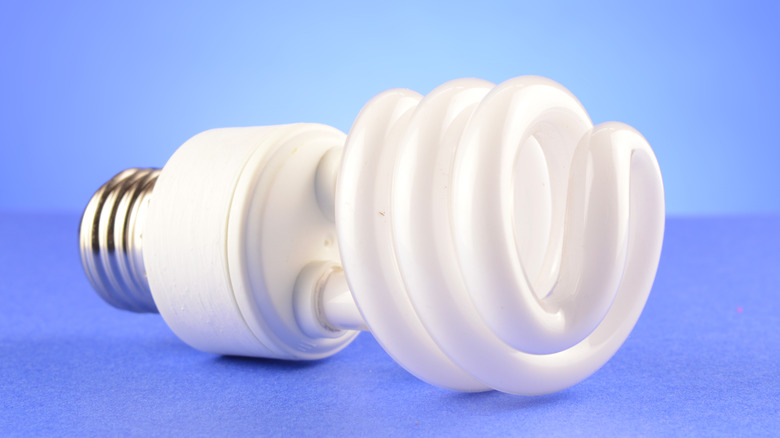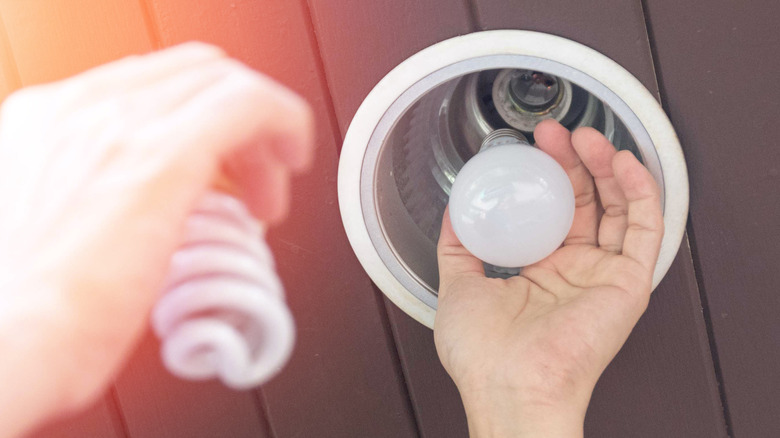Why States Are Banning These Fluorescent Lights
In December 2022, the President Joe Biden's administration proposed a new rule that, if enacted, would nearly triple the current minimum light bulb efficiency level of 45 lumens per watt to over 120 lumens per watt. This legislation would effectively phase out compact fluorescent light (CFL) bulbs entirely in favor of more energy-efficient LEDs.
But as it turns out, several state governments are getting out ahead of the federal government with their own bans on CFLs. On February 17, 2023, Vermont became the first state to ban the sale of CFLs. California has adopted a similar policy, which takes effect on January 1, 2024. According to the nonprofit Environment America, "Colorado, Hawaii, Illinois, Maine, Massachusetts, Maryland, Rhode Island, New Mexico, Nevada, Oregon and Washington" are expected to put legislation to this effect forward.
Even without state bans, consumers are moving away from flourescent lighting. Per a 2020 Residential Energy Consumption survey cited by CNN, almost 50% of U.S. households use LED bulbs for most or all their indoor lighting — that's up from a 2015 survey that found only 4% of households had them. The same survey showed that only 12% of Americans reported using CFLs as their primary bulbs in 2020.
Technology has gotten better
Ironically, it wasn't all that long ago that fluorescent bulbs were considered the green option versus traditional incandescent lighting, but LEDs have since supplanted CFLs as the most energy efficient lighting source. According to the Department of Energy, "LED bulbs can last three to five times longer than a compact fluorescent bulb, and up to 30 times longer than an incandescent bulb."
Besides being less efficient than LEDs, compact fluorescent light bulbs have trace amounts of mercury, a dangerous toxin. The average CFL has about 4 milligrams of mercury, according to EnergyStar. As a point of reference, an old-school thermometer contains 500 milligrams of Mercury. So while it isn't a tremendous amount, it's enough to require burned-out CFL bulbs be taken to a collection site or recycling center rather than placed in the regular trash. Also, if a CFL bulb should break, the EPA recommends you "air out the room" five to 10 minutes before picking up the broken pieces.
Although costs continue to fall, LED bulbs are still more expensive to purchase than CFL or incandescent bulbs, but the initial investment promises to be recouped through longer lifespans and reduced energy costs. In 2022, the Department of Energy said that $3 billion a year could be saved on electrical bills and carbon emissions could be cut by 222 million metric tons in three decades.

